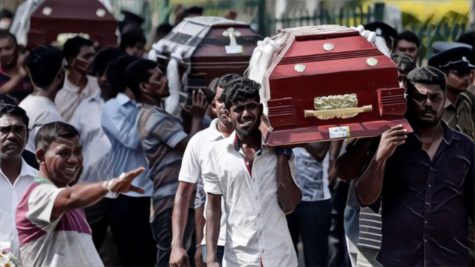The International School Pool: Education Around the World
Different school systems from around the world are looked at to encourage people to compare and contrast education across countries.
England
The British education system is very successful, and is the basis for many other countries’ systems. In Britain, school is divided into four levels: primary, secondary, 6th Form, and university, corresponding to elementary, high-school, college, and university, respectively. College lasts only two years and correlates to the junior and senior year of American schools: students take general education classes and prepare for their A-levels tests, known as university entrance exams. A-levels are very important in determining the university you attend: Universities give offers to students based on these results. The Universities and Colleges Admissions Service, UCAS, is the medium by which most students apply to university; they send A-levels results, grades, and a personal statement to a maximum of five universities. The personal statement is thought of as the most important aspect of the application and is limited to 4000 characters. It is an opportunity for students to explain why they are applying under a specific subject and for listing other major achievements. In Britain, A-levels and your personal statement are the basis of a student’s entire application, similarly in the US, standardized testing scores, such as the ACT and SAT, and college essays play an important role.
Information provided by Bilal Hussein, first year economic student at University of Warwick
Pakistan
Pakistani government schools are notorious for poor education and the low number of actual schools. For this reason, most parents enroll their children in private schools which are much cheaper because they are much more popular (Iowa State University) . Government schools have extremely tight budgets because of greedy administrators who create schools that only exist on paper. The Pakistani education model is based on the British model, and there are many similarities. For example, their schools are divided into primary and secondary. Primary is from kindergarten, or “Prep,” up to the end of middle school. The curricula of the schools vary: the most popular ones being English, mathematics, Islamic studies, art, social studies, and Urdu, the national language. These schools are taught in either English or Urdu with many students fluent in both languages. Secondary education is equivalent to American high school but is much more rigorous and demanding. Students can either enter a specialized secondary education, which most do, or a general one. If a student decides to specialize, they will be assessed in their academic subjects at the end of grade ten: if they pass, they are awarded a Secondary School Certificate, or SSC. They then continue on to grade eleven through twelve, termed “Intermediate College.” There are different streams that a student can enter, like pre-medical and pre-engineering. To earn their Higher Secondary Certificate, students must pass their Intermediate exams; it is the biggest factor in applying for college. For example, if the top medical college has 500 seats, then the top 500 pre-medical test scorers will gain acceptance automatically. Test scores and GPA are the most important aspects of a college application: in fact, they are the only aspects of importance when applying for college.
Brazil
Brazilian education is very similar to the British system. In Brazil, private and public schools are equally common. Primary school runs from elementary to Middle school. After a student has completed primary school, they are not required to go to Secondary school, but it remains a popular option, of course. Like in America, Brazilian students don’t specialize until they reach college. The application process, however, requires students to choose from two specialized tests: the Exame Nacional de Ensino Medio, or ENEM, and the Vestibular Exam. The ENEM tests on subjects such as math, Portuguese, physics, chemistry, biology, history, geography, philosophy, sociology, as well as an essay. The test takes ten hours to complete, and is split into two days. The other test, the Vestibular exam, is a specialized exam which is split into three parts. The first section consists of ninety multiple choice questions about general topics, and must be passed to take the second part. The students who continue on to the second section take a more specialized test; they answer short answer questions about general topics, and write an essay about the subject they are applying to. The students who pass on to the third section take the most specialized test for their subject. For example, a pre-medical student would take a test with questions in biology, chemistry, and geography. The test consists of twelve questions, and is graded by a board of professors in the student’s intended major. They then rank the score in descending order, and the top scorers are allowed to attend college in the fall. Brazil’s standardized tests are much more difficult and specialized than America’s tests: while America has two tests, the ACT and SAT, that assess basic math and English, Brazil has two tests that assess many sciences, different languages, math, and sociology.
Japan
Similar to the US, Japan has both a public school system as well as a private one. Yet due to the statistically more successful private system, the majority of students enroll in these schools. The Japanese school system has six years of elementary school, three years of junior high, three years of high school, and typically four years of college with only the elementary and junior high school being mandated. Unlike the US, government-funded schools must be paid for by the family unless the student passes a special high school entrance exam. Within the Japanese school system, the junior high GPA is held with much higher importance and plays a much larger role in what school the student will be able to get into. The high schools are ranked academically by a GPA requirement that a student must have in order to take the entrance examination which, consequently, is notoriously difficult. In fact, 65% of students attend outside ‘cram-schools’ to prepare for this difficult test. This year of doing both junior high and cram-school is commonly known as “examination hell” by Japanese students. However, 98% of students successfully continue onto high school (The Japan Times). From there, they then have to apply to a university: either a public or private. Private universities are becoming increasingly more popular as they don’t require students to take the standardized university entrance exams. While the American students must endure one application process for college, Japan has two application processes: one for high school and one for college. The process of receiving a proper education in Japan is very stressful academically on the average student.
Information provided by Junior Hikaru Hallberg






